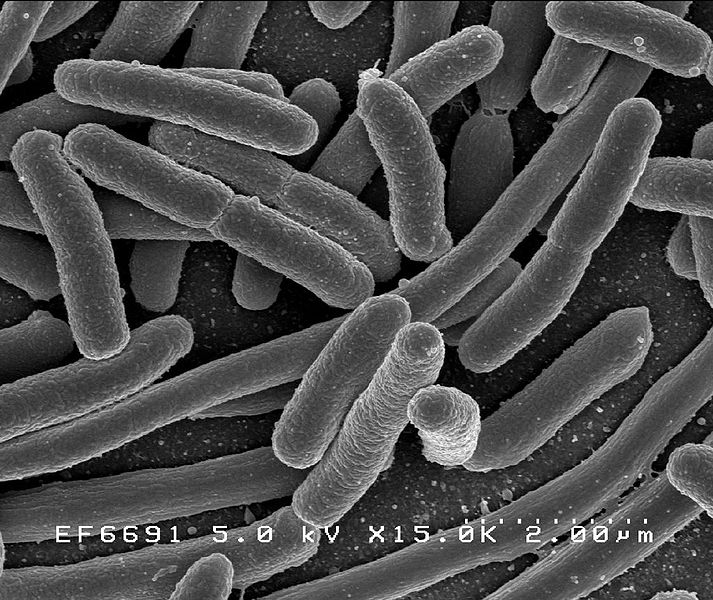Cellulose-digesting coliforms have been converted into biofuel refineries

By David Baylo
The bacteria that causes most food poisoning in the United States may one day be a major source of transportation fuel. With the help of synthetic biology tools, researchers succeeded in changing the genes of the bacterium Escherichia coli, common in the intestines, so that it digests vegetation and produces diesel fuel and other hydrocarbons from it.
Scientists often use coliforms in genetic engineering because the bacteria have been extensively studied and are highly resistant to genetic modification, explains chemical engineer Jay Kiessling of the University of California at Berkeley. The researchers had already modified the bacterium to produce drugs and chemicals, and now Kiessling and his colleagues have turned these organisms into biofuel factories.
Initially, the scientists changed the genes of the coli bacterium so that it would digest sugar and secrete biodiesel of sufficient quality to drive an engine. The resulting diesel floats in the fermentation tank above the aqueous solution, so there is no need to distill it, clean it or break the walls of the cells to remove the fuel from them as is customary in the production of biofuel from algae.
In order to minimize the consequences of the process on the world's food supply, the researchers next looked for genes found in other bacteria capable of breaking down cellulose, the hard substance that makes up most of the plant's parts but is not suitable for human consumption. The team inserted these genes, which code for the production of the cell division enzyme, into the genetic code of the coli bacterium and you have another genetic segment reserved for the new bacterium to secrete the enzyme outside the cell. The enzyme is therefore secreted into the environment, breaking down cellulose into sugar that coli bacteria digest and turn into fuel.
The process, described in the journal Nature on January 28, 2010, is very efficient for producing hydrocarbons with 12 or more carbon atoms. Besides the diesel fuel, jet fuel (kerosene) also belongs to this group. But it is still not possible to produce hydrocarbons with shorter carbon chains such as gasoline in this way. This is a shortcoming that Kiessling is working on correcting. Let's not forget that in the US alone, 530 billion liters of gasoline are burned every year, compared to about 170 billion liters of diesel fuel (and only 7.5 billion liters of biofuel).
Kiessling is not the only one who sees the coliform as a fuel producer. Some commercial companies are also trying to produce fuel in commercial quantities using the tough bacteria. It "grows at a rapid rate, three times faster than yeast," explains geneticist and technology developer George Church of Harvard University Medical School, and "a hundred times faster than most bacteria active in agriculture."
But more work needs to be done on Kiessling's coli bacterium and to improve its fuel production efficiency. "We are now only at about 10% of the maximum theoretical output from sugar," says Kiessling. "We would like to reach 80% or 90% to achieve commercial viability. Furthermore, we will have to plan a production process in large quantities." Creating a new organism also involves removing important metabolic pathways, so that it cannot survive outside the laboratory in the wild.
The challenges are not simple, but the promise of achievement is enormous. Kiessling estimates that in the future, such genetically engineered bacteria will only need to consume 40.5 million acres of grass, about a quarter of the agricultural land in the United States today, to produce fuel that will satisfy all of the United States' transportation needs.

4 תגובות
Today, original methods are being sought to create fuel
L 2: Read the end of the penultimate paragraph again and you will see that this question has been answered.
What happens to the bacteria, it leaves the laboratory, there are mutations, etc.
He couldn't eat all the plants in the world.?
If today they are at 10% and economic viability will only be achieved when they reach 85%, then this technology still has a very long time to be realized. Instead, I would in the meantime direct research resources to the direct use of the cellulose that is now decaying naturally and not being used. The technology, which is an intermediate technology until they reach bacteria that produce fuel in an economically profitable manner, should be a technology of equipment that efficiently burns the cellulose and converts the energy into electrical energy. Yes, it's not ideal and of course such a process is wasteful, but there are some visible advantages:
1) Disposal of agricultural waste
2) Energy resource utilization
3) Use of fuel from a renewable source with net zero carbon emissions
Greetings friends,
Ami Bachar